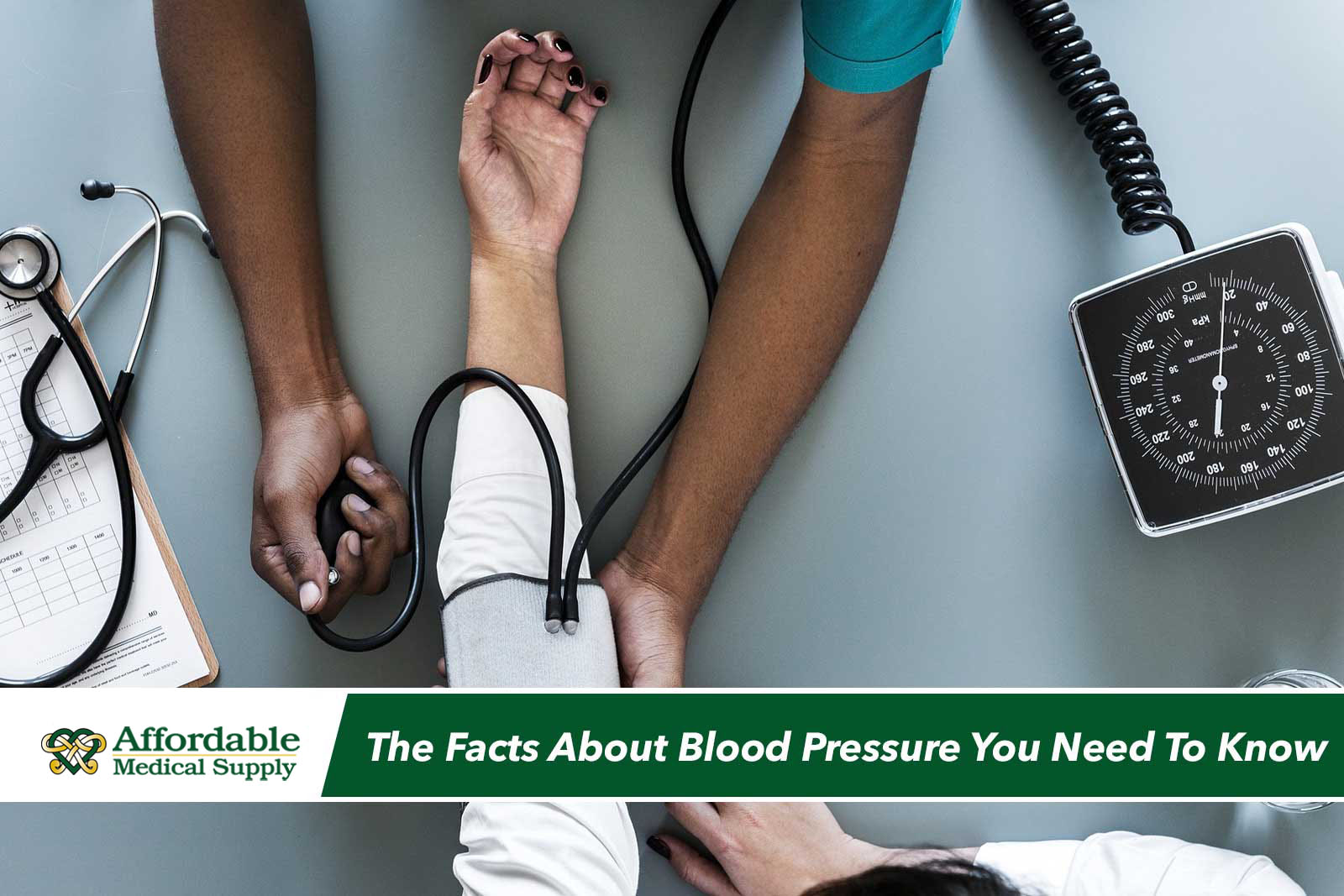The Facts About Blood Pressure You Need To Know

Blood pressure is understood as the force placed on the blood vessel walls in your body, as the blood passes through them. An increase in this force, leads to an increase in the blood pressure- commonly known as hypertension. Similarly, a decrease in this force, leads to a decrease in the blood pressure- commonly known as hypotension. Affordable Medical Supply can aid the early detection of high or low blood pressure by providing information and products. It is important to know the facts about blood pressure so you can get the help you need.
High Blood Pressure
Hypertension can be defined as an abnormally high blood pressure. The older you get, the more at risk you are of getting high blood pressure.
Facts & Myths About High Blood Pressure
- Many people assume that when no symptoms are shown, there is no condition to be diagnosed or treated. People with high blood pressure, however, do not typically show any symptoms and could have had the condition for years without realizing it.
- A common misconception is that because a condition runs in the family, there is nothing that you can do to prevent getting it too. Although there are unavoidable causes leading to high blood pressure, there are factors known as lifestyle choices that can be adjusted to try and avoid getting the condition. Lifestyle choices can be changed by making adjustments to the way we choose to live our life. Choosing to live a healthy lifestyle would mean to exercise regularly; have a healthy, balanced diet; drink alcohol in moderation; monitor your cholesterol and sugar levels; avoid smoking and take your medication properly. Making these changes may lower your risk of getting high blood pressure, despite it running in the family.
- High blood pressure does not have a long, scientific name, which leads people to assume that it is not a serious condition. High blood pressure, however, can weaken the arterial walls, responsible for carrying blood throughout the body. Weakened arteries can lead to damage to the heart, the brain, the kidneys and eyes. When left untreated, high blood pressure can lead to disability, poor quality of life or fatality. It is for this reason, together with the lack of symptoms, that it is commonly known as the “silent killer”.
Low Blood Pressure
Blood pressure changes all the time, for example when we are sleeping, nervous or active. Low blood pressure means that there is less oxygen flowing through your body and being received by the vital organs. Hypotension – abnormally low blood pressure – happens when your body is unable to bring the blood pressure back to normal fast enough.
Facts & Myths About Low Blood Pressure
- A common misconception is that low blood pressure is nothing to worry about. Unlike high blood pressure, low blood pressure is diagnosed at the presence of symptoms. Signs of low blood pressure could be dizziness, fainting, cold and sweaty skin, fatigue, blurred vision or nausea. The dizziness and fainting could lead to the person falling and badly injuring themselves. In extreme cases, low blood pressure can lead to shock. Shock is a condition that occurs when the body is not getting enough oxygen and can be fatal if not treated immediately.
- Unlike high blood pressure, low blood pressure is not genetic and could just be a symptom of an underlying health condition. It does however have lifestyle choice that can be changed to increase blood pressure. Eating more sodium and drinking more water are simple ways to increases your blood pressure.
Although there is more information and higher risks with high blood pressure, low blood pressure should also be monitored. It is important to monitor your blood pressure at home and not only check it at a visit to the doctor. Affordable Medical Supply has provided information, products and services for 41 years and makes it possible to keep tabs on your blood pressure from the comfort of your own home. Invest in a blood pressure machine from Affordable Medical Supply to stay ahead of health complications caused by high or low blood pressure.



